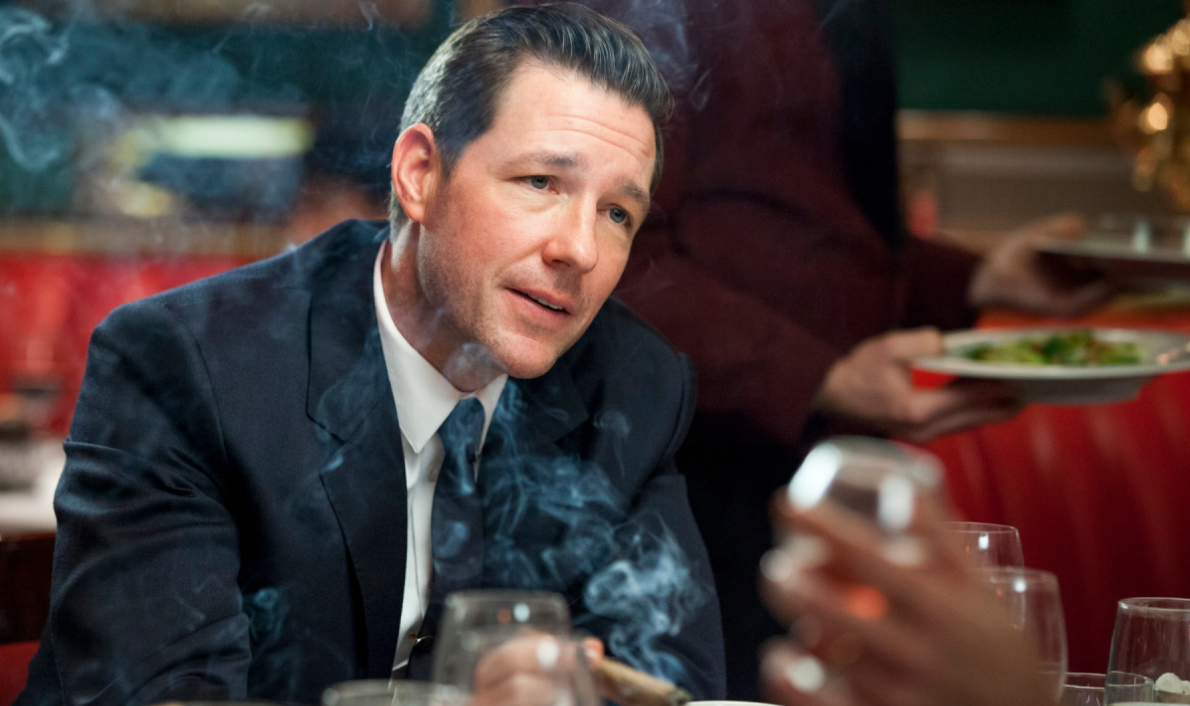Set in New York City in the 1960s, Ed Burns’ new 10-hour series features corrupt cops and gritty gangsters. Critic David Bianculli says Public Morals has the look and feel of a classic police drama.
TERRY GROSS, HOST:
This is FRESH AIR. Edward Burns made his mark 20 years ago by writing, directing and starring in the movie “The Brothers McMullen.” Now, he’s the creator, writer and star of the new TNT cable series “Public Morals,” which begins tonight. He directed two of its 10 episodes. It’s a period cop drama set in the ’60s. Our TV critic, David Bianculli, says it reminds him of some classic cop movies from another decade – the ’70s. Here’s his review.
DAVID BIANCULLI, BYLINE: “Public Morals,” the new limited series that begins tonight on TNT, takes place in New York in the ’60s. But where “Mad Men,” another TV series initially set in that same place and time, was all about the glamour of Madison Avenue, “Public Morals” hones in on the period’s seediness of Hell’s Kitchen. Many of its cops are blatantly corrupt, and most of its bad guys go about their organized crime in a very organized fashion, often with police protection and assistance.
It’s like the world of some of those great police films from the 1970s, movies like “Serpico,” a fact-based story of police corruption that took place in the same period as “Public Morals,” or like “The French Connection,” which used a decaying New York as one of its primary characters, and not only during the car chases. That’s what “Public Morals,” based on the first two episodes provided for preview by TNT, feels like. As future episodes appear, we’ll find out whether this TV drama has the depth and resonance of those classic movies. But for starters, it sure has the look and the feel. Edward Burns plays Terry Muldoon, a plainclothes vice squad cop with a wife and kids at home and with a gruff, dependable beat partner at work. He’s played by Michael Rapaport, and when the two of them barge in on a prostitute and her client, they’re likely to leave with the money or the hooker or both. And when a second- generation cop named Jimmy Shea, played by Brian Wiles, is transferred to the squad, Burns’ Terry sits him down and private to explain the status quo and determine whether the new kid can be trusted to play along. As in many other scenes on this show, the dialogue is as flinty as the characters.
(SOUNDBITE OF TV SHOW, “PUBLIC MORALS”)
EDWARD BURNS: (As Terry Muldoon) Let me ask you, Shea – why’d you want to get into plainclothes?
BRIAN WILES: (As Jimmy Shea) My father thought it’d be a good idea. He says it’s the fast-track to make detective.
BURNS: (As Terry Muldoon) Yeah, well, it certainly helps. And you know what we do here?
WILES: (As Jimmy Shea) Yeah, the colored lieutenant gave me the talk.
BURNS: (As Terry Muldoon) OK. Why don’t we call him Lt. King, all right?
WILES: (As Jimmy Shea) Yes, sir – Lt. King.
BURNS: (As Terry Muldoon) Your old man tell you anything else?
WILES: (As Jimmy Shea) He said I was going to have a lot of fun.
BURNS: (As Terry Muldoon) Well, he was not [expletive] you there. And the reason is, the people of our good city like to have a lot of fun. Sex, drinking, gambling – you name it, they want it. However, as you well know, a lot of that [expletive] is illegal. Afterhours joints, prostitution, gay bars, craps games, numbers – every one of them is against the law, which has never really made much sense to me, given that these are all victimless crimes. Wouldn’t you agree?
WILES: (As Jimmy Shea) Yeah, I guess.
BURNS: (As Terry Muldoon) Yeah, I mean, who’s getting hurt, right?
WILES: (As Jimmy Shea) Nobody.
BURNS: (As Terry Muldoon) Besides, do you want to lock up a couple of old-timers for having a drink on a Sunday morning, or the hard-working guy who wants to place a wager on a ball game, or some poor broad who ends up hooking because life has dealt her a [expletive] deck? What about the queers? You want to get all these poor bastards because they want to get together, have a few beers and play a little grab-ass? I know I don’t want to. I’m guessing you don’t want to either because it’s my understanding you’re college kid, and therefore you must be pretty bright.
WILES: (As Jimmy Shea) So then, what exactly do we do here?
BURNS: (As Terry Muldoon) Well, as I am sure your father must have explained to you, we do what has been done for the last hundred years – we manage it for the city. Think of us as the landlords. And if you want to be in business, you got to pay your rent. Do you understand what I am telling you?
WILES: (As Jimmy Shea) Yes, I do.
BURNS: (As Terry Muldoon) Good. Now, I’m only going to ask you this this one time – are you in?
WILES: (As Jimmy Shea) Yes, sir.
BIANCULLI: Out on the streets, the cops mix with the gangsters as part of their daily rounds. Timothy Hutton plays one crime lord who’s not only connected, he’s connected to Terry by family. The loyalties and family ties run deep, and the corruption runs deeper. And before the opening episode is over, there’s a death that sets some major confrontations into motion. And while the opener is a little exposition-heavy, introducing so many characters and conflicts central to its ensemble drama, episode two of “Public Morals” really ups the ante. That’s when it introduces even more characters played by one terrific actor after another. For starters, the focus is on men. Women take a backseat, at least for now. Neal McDonough, recently a great villain on FX’s “Justified,” plays another steely-eyed mob guy. Brian Dennehy, as that guy’s father, is a rival mob boss. And Peter Gerety, from “Homicide: Life On The Street,” plays Terry’s father. When you save that kind of talent for episode two, you’re building up to something big, and you have a strong sense of where you’re going. The storyline of “Public Morals” will roll out as a new 10-episode TV limited series. But with its ’60s look and its vintage ’60s musical soundtrack, I like to think of it as a formerly undiscovered 10-hour cop movie from that era, and I bet that’s the way Edward Burns, when he was writing and directing and acting in it, thought of “Public Morals” also.
GROSS: David Bianculli is founder and editor of the website TV Worth Watching and teaches television and film history at Rowan University in New Jersey. Tomorrow on FRESH AIR…
(SOUNDBITE OF TV SHOW, “GIRLS”)
LENA DUNHAM: (As Hannah Horvath) I know that this is complicated, but I also know that we can work it out.
ADAM DRIVER: (As Adam Sackler) Well, I’m sick of trying to work it out. Can’t one thing ever be easy with you?
GROSS: We’ll hear from Adam Driver. He’s best known for his role on HBO’s “Girls” as Adam. His own life has been pretty different from the character’s on that show. For example, he enlisted in the Marines after 9/11. I hope you’ll join us tomorrow. I’m Terry Gross.
Copyright © 2015 NPR. All rights reserved. Visit our website terms of use and permissions pages at www.npr.org for further information.
NPR transcripts are created on a rush deadline by Verb8tm, Inc., an NPR contractor, and produced using a proprietary transcription process developed with NPR. This text may not be in its final form and may be updated or revised in the future. Accuracy and availability may vary. The authoritative record of NPR’s programming is the audio record.

